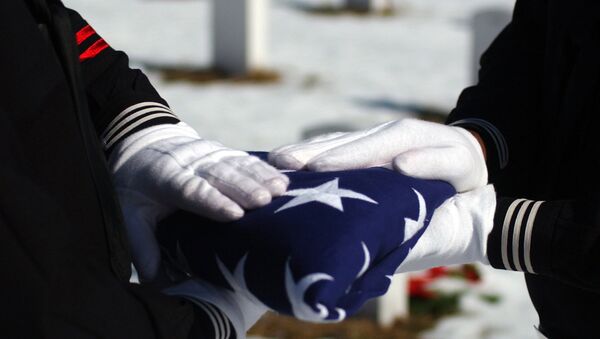Anonymous special ops troops have told The Daily Beast that slain Green Beret Sergeant Logan J. Melgar had spoken to his wife about "the bad feeling" he had about two US Navy SEALs, who are currently under suspicion of his murder, although he didn't elaborate why he felt that way.
Melgar's emails to his spouse, documenting problems he was having with the SEALs, have been provided to investigators.
EXCLUSIVE: A green beret discovered Navy SEALs' illicit cash—and then he was killed https://t.co/x3eRsjdeKr
— The Daily Beast (@thedailybeast) November 13, 2017
In late October, it was announced the death of Sergeant Logan J. Melgar at US embassy housing in Bamako, Mali had been ruled a homicide by strangulation, and two Navy SEALs, who had been staying in the same building had been officially placed under suspicion — now, it's been suggested Melgar may have been killed to stop him speaking out about the theft of funds by the elite team.
Individuals in the Green Beret community had apparently speculated Melgar may have been murdered after stumbling upon illicit activity, or as a result of a personal dispute had escalated into violence, ever since his death.
Cut You In
Two unnamed special operations sources say the slain Green Beret had discovered the SEALs were pocketing money from a fund used to pay informants and collaborators. The SEALS offered to cut him in, but Melgar declined, the anonymous troops told The Daily Beast.
How much time elapsed between Melgar's discovery of the scheme and his untimely death is unclear, but the official narrative suggests an altercation between the Green Beret and the SEAL team erupted June 4 at 5am, and quickly escalated.
Melgar lost consciousness, and stopped breathing — the SEALs attempted to open an airway in Melgar's throat, to no avail. The SEALs and another Green Beret then drove to a nearby French clinic seeking help, but he was dead prior to arrival due to asphyxiation.
They told their superiors that the dispute stemmed from Melgar being drunk during "combatives" — hand-to-hand fighting exercises — and filed a posthumous operational report about the incident to that effect, which claimed Melgar was "grappling" with them when he ended up in a "chokehold."
Melgar then passed out, and their efforts to resuscitate him were unsuccessful.
An unnamed AFRICOM official, however, told the Daily Beast that the autopsy report indicated no drugs or alcohol were found in Melgar's system, and at least one source believes he abstained from alcohol entirely.
Brigadier General Donald Bolduc, then-commander of Special Operations Command-Africa, was allegedly skeptical of the initial reports from the outset, alerted Army Criminal Investigation Command to his suspicions and told commanders in Mali to preserve evidence.
Cloak of Darkness
The country's elite fighting squads typically operate in the shadows, in far-flung countries, with little to no oversight, and despite the heroic image of the SEALs and other similar units purveyed by politicians and the media, there are strong suggestions their operations often have a dark side to them.
Perhaps no other military unit has come to embody US military success or heroism in the mainstream more than SEAL Team 6, the group which executed Osama bin Laden in May 2011.
An extensive investigation into the group's actions over the course of the War on Terror, published by The Intercept, revealed a rather different and troubling story, including "revenge ops," unjustified killings, and other atrocities. The group's crusade was moreover allegedly tolerated and suppressed by the command's leadership.
For instance, Team 6 was said to have adopted a policy of "canoeing" — shooting already dead combatants in the upper forehead at close quarters, in order to create a v-shaped wound that exposed brain matter, and then taking a commemorative photo of their fallen quarry.
Between 2005 through 2011, battlefield reports and accounts of such atrocities, including mutilations and taking of trophies, were ignored by the team's leadership.
While the team's internal policies stringently precluded the shooting of unarmed individuals, and demanded a clear posthumous demonstration such targets had displayed hostile intent.
If SEALs couldn't justify the threat after a shooting, they were meant to removed from the unit — although no investigation into an unjustified killing has ever resulted in formal disciplinary action against a member of Team 6.
Furthermore, the team also took on members of other units who had been disciplined for similar behavior, in 2007 accepting a former Gold Squadron sniper who left his unit after killing three unarmed people — including a child — in two operations.






